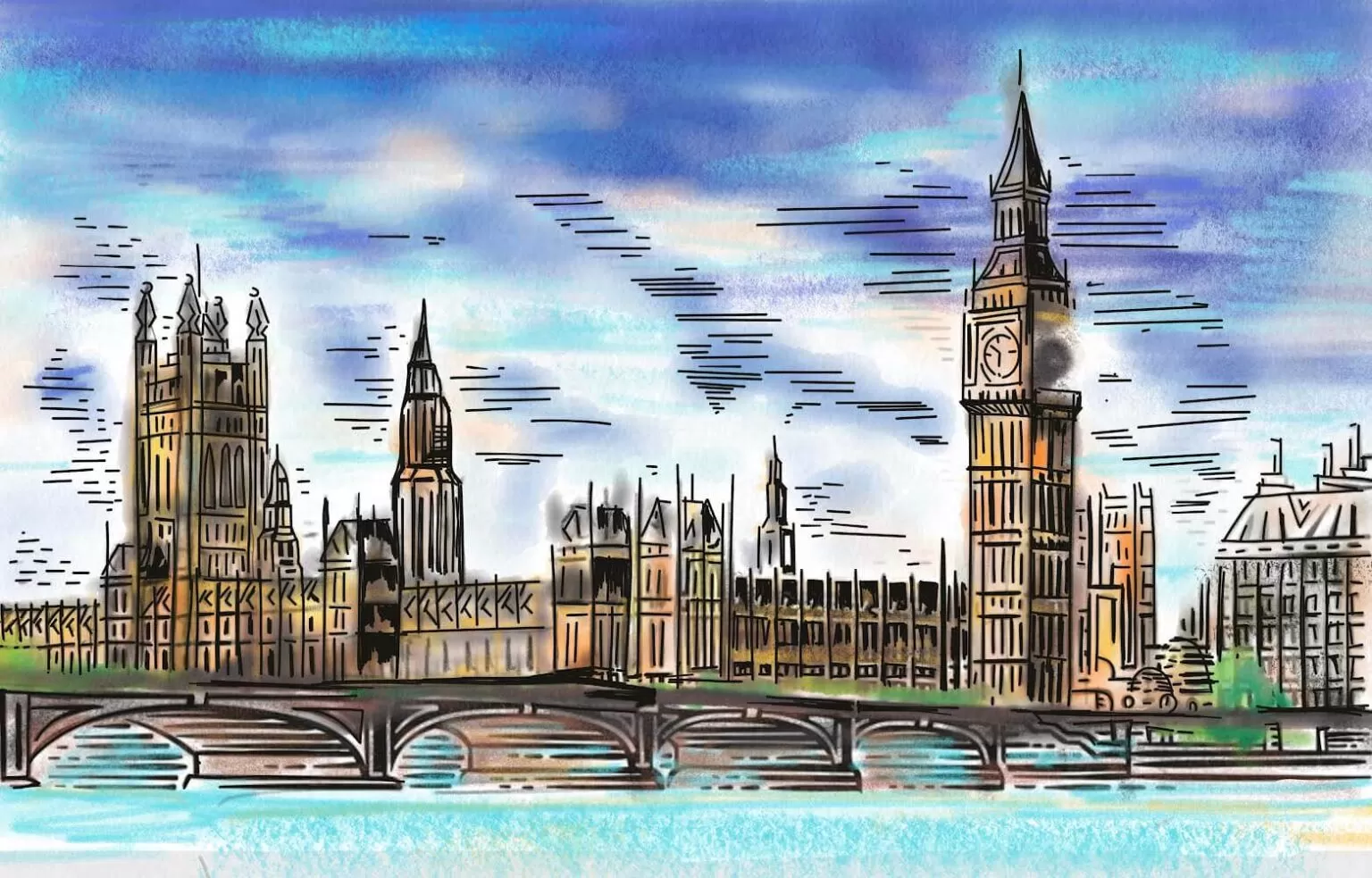Sir Charles Barry, a prominent architect of the nineteenth century, was credited for the Palace of Westminster’s beautiful Gothic style, making it among the most recognizable structures in the world. It has been said that the 18th century was “a brilliant time in British Architecture.” High ceilings, classical exteriors, ornate interiors, and panel doors served as its primary distinguishing features. In addition to this, the Roman Empire had a significant impact.
The ceilings of many buildings were split into various portions, while the walls were often painted in a single hue. Lavender, pea green, pink, and light blue were a few of the vogue hues of the period. Europe has been devastated by Palladian architecture up to this point. Neo-Georgian architecture, however, was used to describe structures that included Georgian design.
All architectural designs made during the House of Hanover’s rule in Britain are collectively referred to as Georgian architecture. These included Neo-Gothic, Palladian, and Chinoiserie. At first, Georgian architecture was an adaptation of continental Europe’s Renaissance architecture. It was a kind of Palladian architecture, which was distinguished by balanced façades, subdued adornment, and sparse ornamentation. British Georgian architecture aimed on symmetry, stability, and simplicity.
The British Parliament is located at the Palace of Westminster. Augustus Welby Pugin and Sir Charles Barry collaborated on this Perpendicular Gothic structure, and Linda Colley calls it “the architecture that best enshrines Britain’s national and imperial pretensions.”
The Palace is located in what many refer to as “the Houses of Parliament. “This structure dates back to the 11th century when it was constructed as a royal residence. In 1512, a fire severely destroyed the original structure.
It was rebuilt, but another devastating fire destroyed it in 1834.After it was demolished, the modern Palace was constructed as a stronger replacement. The Palace is, without a doubt, one of London’s most stunning structures. It is one of the most visited places in the world because to its stunning setting on the banks of the Thames in the heart of London.
The two most well-known chambers in the Parliament Building are the Chamber and the Speaker’s Chamber. The most elaborately furnished space is the Lord’s Chamber. Aside from its vivid hues, it also has intricate carvings. The second chamber is known as the Commons Chamber, and it is somewhat less ornate than the Lord’s Chamber. Its decor hails from a variety of Commonwealth nations.
The current Palace of Westminster was built in the 15th-century symmetrical Gothic style, which helped the Gothic style become popular again in the 19th century. In 1835, a Royal Commission was set up to look into restoring the Palace, and there was a heated public debate about the architectural styles that were being considered.
During this time, most buildings were neoclassical, like the White House in the United States. In June 1835, the panel said that the buildings should have either Gothic or Elizabethan architecture, since the Elizabethan style was associated with revolution and republicanism and the Gothic style was supposed to represent conservative design.
The commissioners also opted against keeping the old palace’s original plan, despite the fact that the new design should integrate the Westminster Hall, which is still standing and is one of the best instances of how time has been framed. It is an essence that people have crystallized into a conventional form.
Westminster’s architectural path is unsettling but important in every way. Before becoming the marvel that it is today, this beautiful monument underwent many levels of development. The architecture of Westminster combines elements of early mediaeval and Gothic styles. It is in charge of creating a past that is still experience able now.
The oldest legislative seat for both the United Kingdom and the British Empire abroad, the historic Palace of Westminster in London, which caught fire in 1834. A new palace had to be built out of the ashes to surround the mainly unscathed Westminster Hall because the blaze, which raged into the wee hours of the morning, destroyed so much of the mediaeval complex that neither repair nor preservation were seen to be realistic possibilities.
Juts admires a number of famous British structures. There are unexpected aspects in every room of the building. With its decorations, sculptures, arches, and roofs, certain areas are quite noisy. However, other areas, like the cloister, provide the most serene surroundings. The chapel, a place for private festivities, burials, or worship, draws attention to the building. The magnificent fan-vaulted ceiling, with its carved pendants, adds to the room’s majesty. It undoubtedly makes us ponder the originality and audacity of architects in earlier eras.
The fusion of experience, aesthetics, and culture, which is reflected in the building, is the essence of this place. Westminster’s British characteristics include its large stained glass windows, pointed arches, rib vaults, flying buttresses, ornate ornamentation, verticality, and asymmetry.
The building radiates a feeling of suspense and mystery. The pointed arch lessened some of the force, relieving pressure on other structural elements. This might lead to smaller columns or piers supporting the arch. This one was created in the Romanesque architectural style.
The pointed arches of Gothic architecture are recognized for being more adept at sustaining weight than the rounder arches often seen in Romanesque structures. These pointed arches had a symbolic meaning in addition to their mechanical function since they pointed skyward. Compared to the massive, drum-like columns seen in Romanesque churches, the new columns are thinner.
The top levels of the nave were made similarly slender in order to avoid the gallery and clerestory from seeming to dominate the lower arcade. The column virtually reached the roof before joining the vault. The pointed arch can be seen in three dimensions in the vault where the ribbed vaulting meets in the center of each bay’s ceiling.
The ribbed vaulting is another hallmark of Gothic architecture. However, it should be emphasized that the pointed arches and ribbed vaulting were first seen in late-Romanesque architecture. The intricate brickwork known as tracery, which supported the windows, is florid, while other masonry displays considerably greater flamboyance.
The slender columns and lightweight thrust mechanisms allowed for larger windows and more light. The windows, tracery, sculptures, and ribs comprise a confusing collection of adornment.
The building exhibits Britishness as well, evolving into more inviting and royal settings as a result of light, sparkling windows, and spacious interiors. Its control over The Central Tower, which was built as a ventilation tower, and its two kilometers of corridors.
When revolutions rocked much of Europe, its Gothic splendor served as a potent symbol of a nation in change. However, the British Isles were spared the worst of the unrest because to parliamentary reforms. The enormous new Houses of Parliament, albeit fashioned in an interpretation of bygone eras, functioned as a prominent emblem of a contemporary, more democratic society. Since then, it has endured the passage of time and the World War II Blitz to continue to be one of London’s most recognizable architecture.





